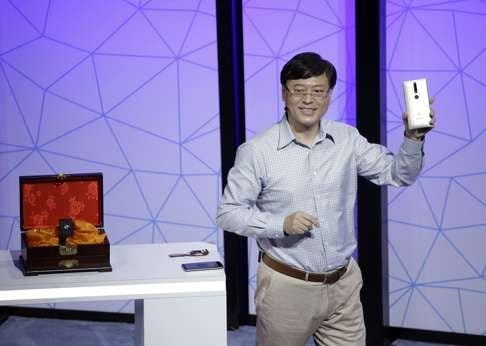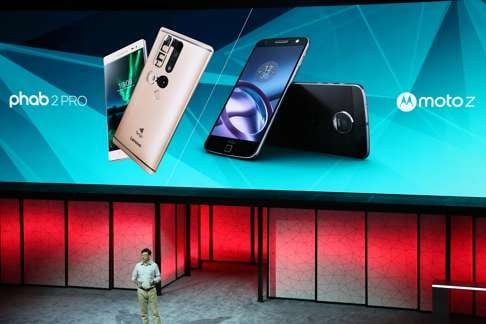
China’s Lenovo seeks lead in smartphone innovation with first handset that supports augmented reality technology
Chinese technology giant Lenovo Group has taken the first bold steps to revive its flagging mobile phone business, with the launch of the world’s first smartphones with augmented reality (AR) technology and Transformer-like snap-on modules.
Speaking at Lenovo’s second annual TechWorld conference on Thursday in San Francisco, chairman and chief executive Yang Yuanqing said the new devices would serve as “game changers” for the company and a global smartphone industry that has been flooded with similar devices that lacked innovation.
“We’re helping lead this transformation by combining our expertise in hardware innovation with the critical backend cloud platform to help devices listen, see, sense and understand the world,” Yang said.

Lenovo unveiled at the event its much-anticipated Phab2 Pro, the world’s first smartphone to bring AR technology to the hands of consumers. Augmented Reality overlays three-dimensional digital information and objects onto the real world, as seen from the Phab2 Pro’s 6.4-inch display.
The Phab2 Pro has an 8-megapixel front camera for selfies as well as a 16MP camera, an infrared camera and motion-tracking camera on the back to render 3D images. It was co-developed with Google and its Tango technology platform, which uses advanced software and sensors to enable AR utilities and gaming features.
“Tango enables our devices to sense physical motion and space and, as a result, has the power to change how we interact with our surroundings,” said Johnny Lee, an engineering director at Google. In his demonstration, Lee used AR apps which placed virtual dinosaurs on stage and captured 3D dimensions in a room to obtain measurements for furniture.

The Phab2 Pro is priced at US$499 and will be sold around the world from September, which would be the same month Apple’s latest iPhone models are expected to be launched.
Lenovo, the world’s largest supplier of personal computers, expected to have 25 Tango apps by September and about 100 apps by end-December.
The company also launched its new flagship Moto Z and Moto Z Force mobile phones, which it touted as the world’s thinnest premium smartphones. No pricing was given, but these devices will also release this September.
The Moto Z models were designed to be paired with snap-on modules, advanced accessories called Moto Mods, which transform its function. Initial modules include a device that can transform the Moto Z into a projector.
Kitty Fok, the managing director at research firm IDC China, said the Moto Z’s modular accessories “opens up another type of developer ecosystem for Lenovo, which can help China’s consumer electronics hardware manufacturers”.
“This strategy could help differentiate Lenovo from other Chinese smartphone suppliers,” Fok said. “Phab2 Pro is impressive, but Tango is not exclusive with Lenovo. Other smartphone brands will also have AR in their product portfolio.”
Lenovo was the world’s fourth-biggest smartphone supplier last year, but fell behind in the first quarter this year as Samsung Electronics, Apple and Chinese companies Huawei Technologies, Oppo and Vivo were in the top-five ranking, according to IDC.
Yang has vowed to pursue more aggressive investments to turn around Lenovo’s smartphone business. The company last month reported a US$128 million net loss in its fiscal year ended March 31, compared with a US$829 million net profit in the previous fiscal year, due to restructuring costs of US$596 million and one-time charges totalling US$327 million, which included a write-off of its smartphone inventories as part of a reorganisation at its mobile unit announced in August.

